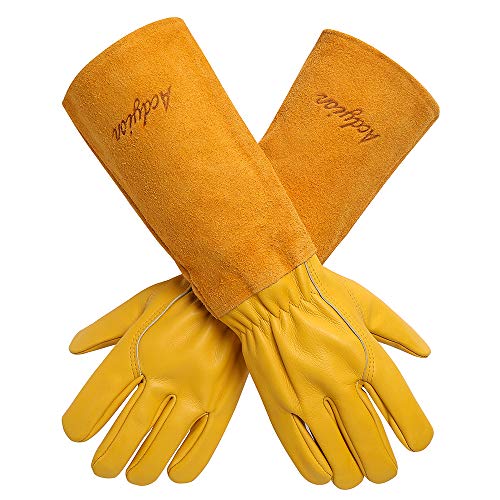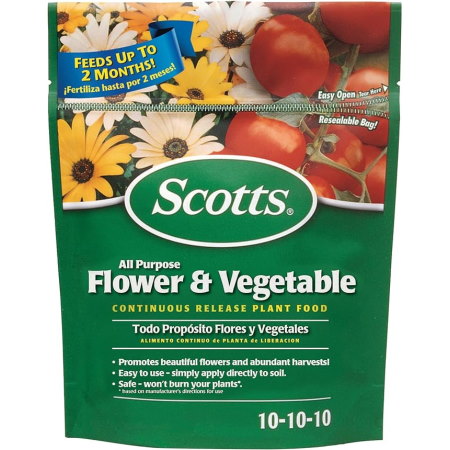How and when to fertilize cucumbers – plus the right type of fertilizer to use for a bounty of fruits this year
Regular feeding is important to keep this hungry crop producing lots of tasty cucumbers


Cucumbers are hungry crops that need lots of water and feed to ensure they produce a bumper crop of fruits. If you want a bounty of cucumbers for salads or sandwiches throughout the summer, then regular fertilizing is a vital part of maintenance.
When growing cucumbers it is crucial to give them a feed at the time of planting and then when they start producing flowers. Regular fertilizing will help them keep on producing flowers and ripening fruits.
We take a look at the most important times to apply feeds to cucumber plants and the best fertilizer for cucumbers to guarantee you a fantastic crop.
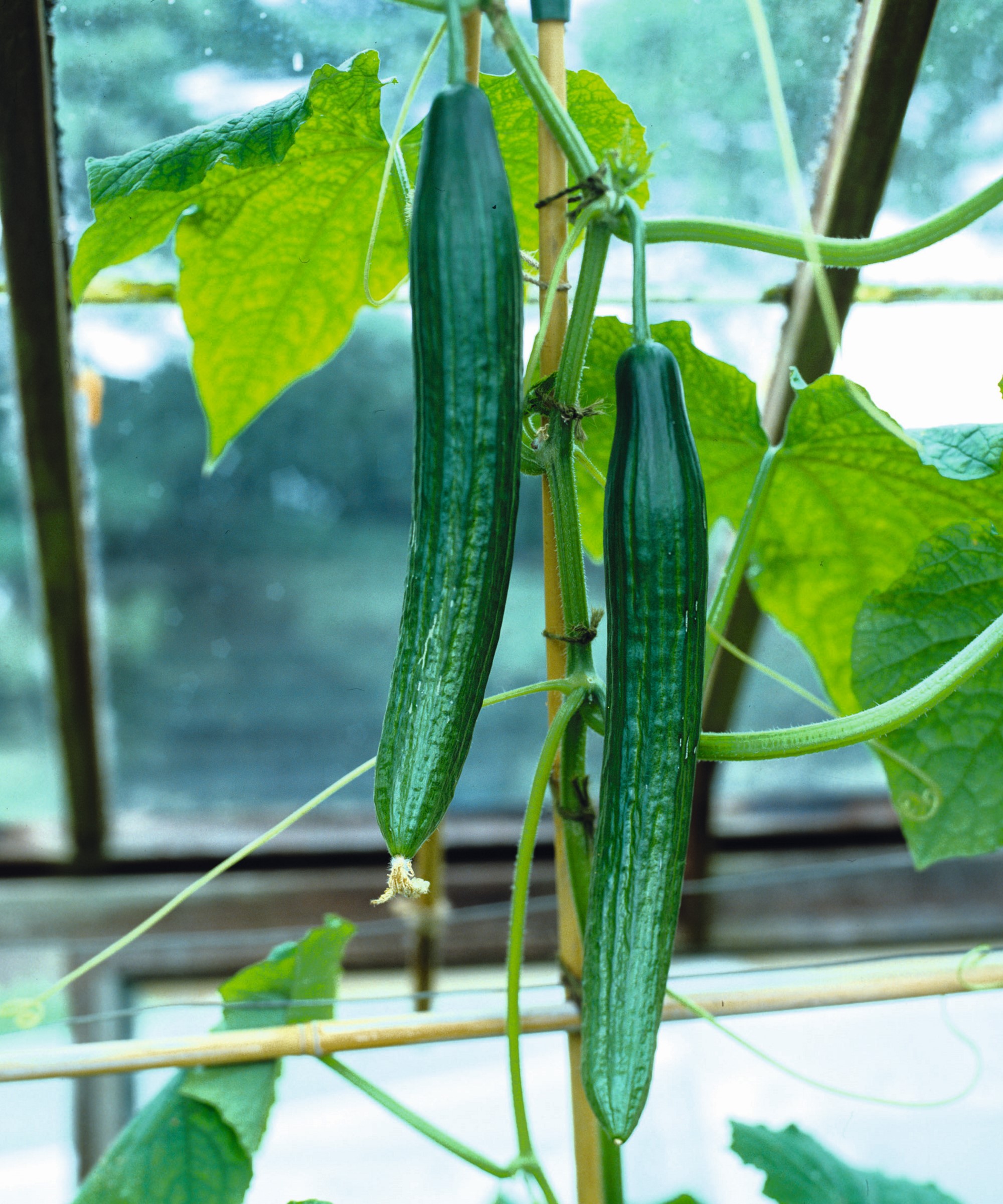
Cucumbers are warmth-loving plants and predominantly climbers
When to start fertilizing cucumbers
Cucumbers are commonly sown indoors as part of greenhouse planning, ready to be planted into their final position once the risk of frosts has passed. There are always enough nutrients in seed compost to start the seedlings off, but there are benefits to adding some fertilizer to the soil when plants are potted on.
The time for when to fertilize seedlings is once they get to around six inches tall and need moving into larger pots to grow on.
Adding a slow-release cucumber fertilizer mixed in with compost can help give the seedling a boost and provide it with the nutrients required until it is large enough to be planted in the greenhouse, vegetable garden, or as part of a container garden.
While the addition of fertilizer at the seedling stage is not always vital, the same cannot be said of when it comes to planting cucumbers. At this time it is crucial, and there are a few options available to the grower.
Design expertise in your inbox – from inspiring decorating ideas and beautiful celebrity homes to practical gardening advice and shopping round-ups.
You can incorporate compost or well-rotted manure into the planting site, which has all the vital nutrients plants need for strong and healthy growth that it releases over an extended period of time.
The other option is to add some slow-release and balanced fertilizer into the planting site to give plants a good boost of nutrients to get them started in their final planting spots. Cucumbers are often seen as a great crop to grow in a greenhouse or people grow cucumbers vertically over arches or trellises as part of vertical gardening ideas to make the most of space.
The next point in time where cucumber fertilizer comes to the fore is when the plants start to show their first flowers. At this stage, the plants need lots of potassium, which is the nutrient vital for flowering and fruiting and it is required to ensure you can pick cucumbers regularly over the season.
John Negus, a gardening expert and author, recommends that in June after the frosts finish, growers transplant their cucumber seedlings ‘into sunny, well-drained and fertile soil, enriched with composted manure’.
He adds: ‘Liquid-feed indoor and outdoor plants weekly with a high-potash tomato fertilizer’.

John has been a garden journalist for over 50 years and regularly answers readers' questions in Amateur Gardening magazine. He has also written four books and has delivered many talks over the years on horticulture.
When to fertilize cucumbers in pots
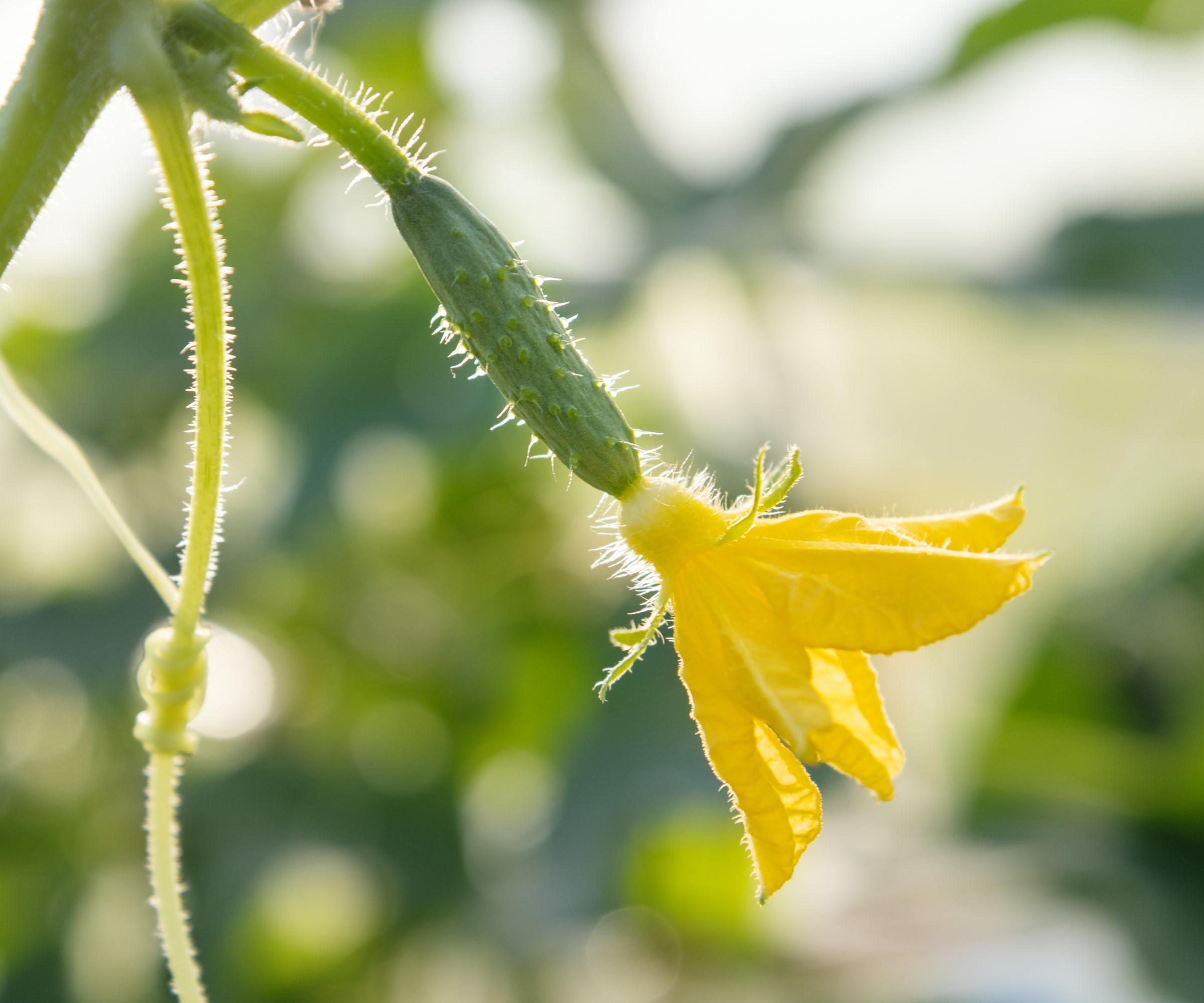
Cucumbers benefit from a potash feed when they start flowering
Cucumbers are crops that are well-suited to growing in vegetable garden containers, while they are also commonly grown in grow bags both indoors and outdoors. It is important to incorporate cucumber fertilizer into any potting mix, as cucumbers are heavy feeders that can quickly use up all the nutrients in the finite amount of soil in the container.
Therefore, feeding becomes vital during the growing season to make sure plants have all the nutrients required to grow and produce fruit. A lack of nutrients can cause many problems, including cucumber leaves turning yellow and plants not producing as much fruit as you might have hoped.
Ruth Hayes, a gardening expert and contributing editor for Homes & Gardens, describes cucumbers, as well as the likes of tomatoes, zucchini, and squashes, as ‘super-feeders’ that can easily use up any goodness in the soil quickly when grown in containers or grow bags.
She recommends: ‘To get the best results, feed and water them regularly. When it comes to feeding, ‘little and often’ is better than a big feed once a fortnight. A weekly feed with a liquid, high-potassium fertilizer will encourage good flowering and fruiting. Don’t let the compost dehydrate as this will inhibit the plants’ take-up of feed.’

Ruth Hayes is an expert gardener, and formerly gardening editor of Amateur Gardening magazine. She is horticulturally trained, with a qualification from the Royal Horticultural Society, and now regularly shares her expertise with Homes & Gardens.
What fertilizer to use for cucumbers
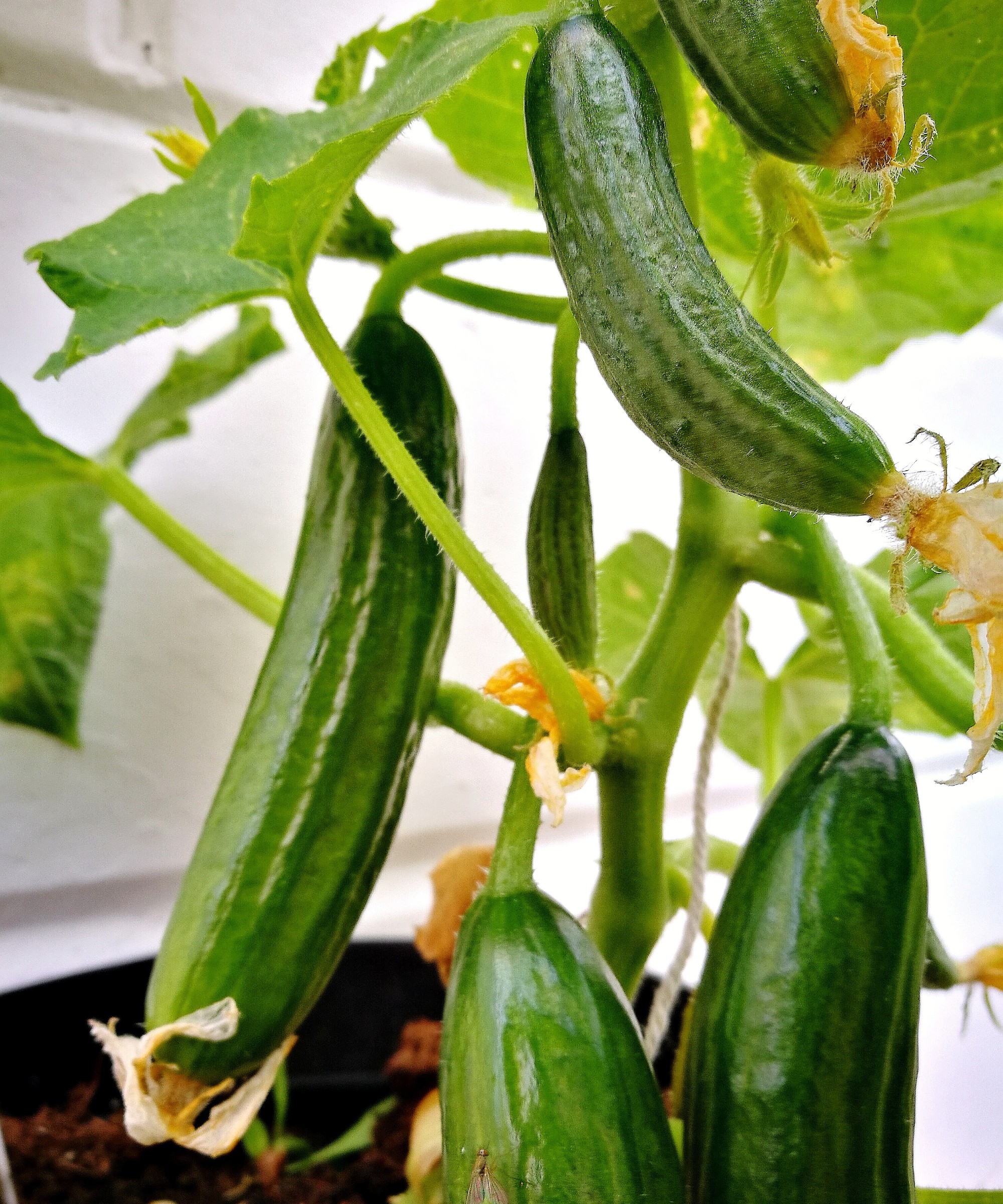
Cucumbers crop from mid-summer onwards
It is important to understand plant fertilizer numbers that appear on the packaging to outline the make-up of nitrogen, phosphorus and potassium, referred to as NPK. These show as three numbers, with a balanced fertilizer showing a ratio such as 5-5-5 or 10-10-10.
The ratio explains how much of each nutrient is contained in the feed and helps to make decisions about which fertilizer to use. It is vital to always use fertilizers at the manufacturer’s recommended rate and never exceed them.
When planting cucumbers, compost or well-rotted manure are great choices to incorporate into the soil. Or add a handful of balanced slow-release granular fertilizer to the soil. One of the best fertilizers for cucumbers that can be used at the planting stage is the Expert Gardener all purpose plant fertilizer 10-10-10, available at Walmart.
Once the cucumber plants are flowering, the best fertilizer for cucumbers is one designed for growing tomatoes, for a feed that is high in potassium. Potassium is a huge boost in helping plants produce flowers and form fruits.
Such feeds are commonly used in liquid form, being mixed with water to be added when watering plants. A high potassium fertilizer will display a high third number on the label. As well as tomato feed, other high-potassium fertilizers to consider include using wood ash or kelp meal.
An example of a liquid tomato feed to use is the Great Big Tomatoes Fertilizer, available on Amazon.
There are natural options that are also good fertilizers for cucumbers. These include making comfrey fertilizer or feed from nettles. These natural plant fertilizers are simple to make and contain all the vital nutrients required by plants.
By cutting the plant’s leaves and mixing in water, you make a nutrient-rich tea that needs to be diluted and applied to plants.
Cucumbers can be simple plants to grow. Watering and fertilizing are essential tasks to regularly complete, while you can also prune cucumber plants to keep them at their most productive.
Many growers also utilize cucumber companion planting to help combat pests or diseases that might want to hamper plants and to help them maximize their yield.

Drew has worked as a writer since 2008 and was also a professional gardener for many years. As a trained horticulturist, he worked in prestigious historic gardens, including Hanbury Hall and the world-famous Hidcote Manor Garden. He also spent time as a specialist kitchen gardener at Soho Farmhouse and Netherby Hall, where he grew vegetables, fruit, herbs, and cut flowers for restaurants. Drew has written for numerous print and online publications and is an allotment holder and garden blogger. He is shortlisted for the Digital Gardening Writer of the Year at the 2025 Garden Media Guild Awards.

